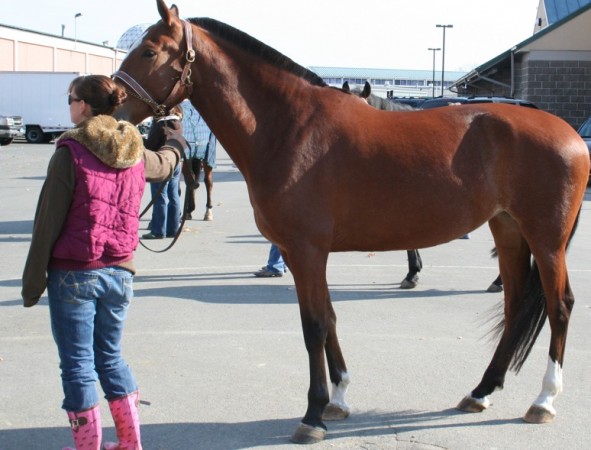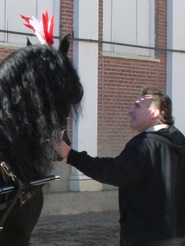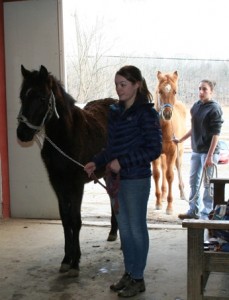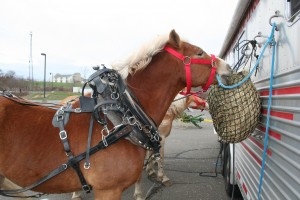Round Up: Winter Equine Know-How, New Survey
Don't let the snow, ice or cold slow down your life with equines – or the pursuit of a career with them. Here's some food for thought no matter the weather.
A Master Equine Program course offers horse owners and enthusiasts an online pathway year-round to learn the science of horse management combined with hands-on experience assessment. Access the course modules using a computer for self-paced learning, then complete the program with a practical evaluation assessment on May 15 and May 16 at the University of Connecticut. Program fee is $325; $250 for youth (high school junior or senior).

Learning delivery uses video recordings, slide sets, activities, articles, resources, and a quiz review for each segment.
• “Understanding Horse Behavior, Facilities and Equipment, Equine Quality Assurance”
• “Nutrition: Forages for Horses, Feeds and Feeding”
• “Health: Equine Emergency Treatment, Vaccinations for Horses, Understanding Horse Parasites, Hoof Care”
• “Selection of Horses: Information and Evaluation, Unsoundness’s and Blemishes”
Register at www.ucs.iastate.edu/mnet/equine/register.html where there is a list of participating colleges and universities offering the on-site assessments. The Iowa Master Equine Manager (MEM) Program was designed and implemented in 2005 by two Iowa State University Extension field staff members, Dale Miller and Glen Easter.
Visit www.extension.iastate.edu/masterequine/page/upcoming-programs for more information.
 Now, have an opinion about equine training and the overall horse show industry?
Now, have an opinion about equine training and the overall horse show industry?
A new survey – “Perception of Care and Treatment of Show Horses” – is being conducted by Dr. Colleen Brady, Purdue University associate professor extension education, and Melissa Voigt, graduate student.
To participate you must be 18 or older and agree to the consent form that is part of the study. Brady provides leadership for the 4-H animal sciences program and has collaborated with extension educators, industry representatives, and extension specialists nationwide.

For more about the process, visit this link. Or contact Voigt at voigt(at)purdue.edu or Dr. Colleen Brady at bradyc(at)purdue.edu.
The goal of the information gathering process is to gain a better understanding of the perception people have about the care and treatment of show horses. In addition to questions pertaining to the care and treatment of horses, personality characteristics and demographic information will also be gathered to ensure quality results.
Equines are a factor of life across the region and country.
 According to an economic study done by Deloitte Consulting LLP for the American Horse Council Foundation, in 2005 there are 9.2 million horses in the U.S., including horses used for racing, showing, competition, sport, breeding, recreation and work. This includes horses used both commercially and for pleasure. Some 4.6 million people are involved in the industry in some way, either as owners, employees, service providers or volunteers, including two million horse owners.
According to an economic study done by Deloitte Consulting LLP for the American Horse Council Foundation, in 2005 there are 9.2 million horses in the U.S., including horses used for racing, showing, competition, sport, breeding, recreation and work. This includes horses used both commercially and for pleasure. Some 4.6 million people are involved in the industry in some way, either as owners, employees, service providers or volunteers, including two million horse owners.

The horse industry in the U.S. contributes $39 billion in direct economic impact to the economy and supports 1.4 million jobs on a full-time basis, according to the study. When indirect and induced spending are included, the industry's economic impact reaches $102 billion.
For a report focused on the economic power of equines in Connecticut, see this story from our archives. For news about the mounted patrol in Hartford, see this link.
For more equines and events, visit our Horses & Life page.



